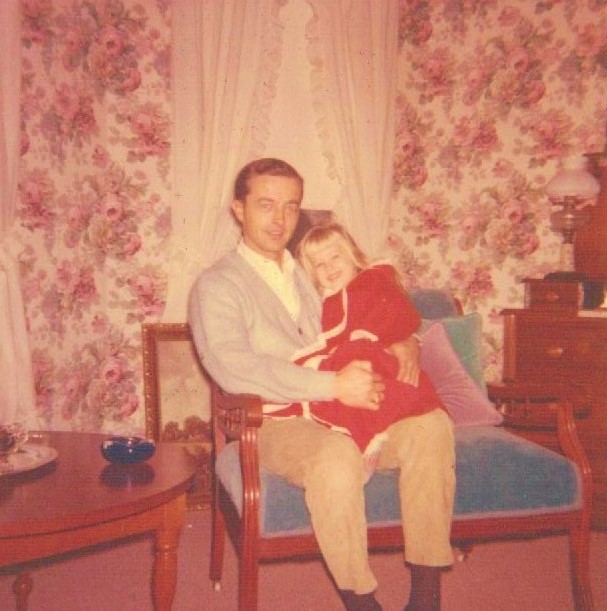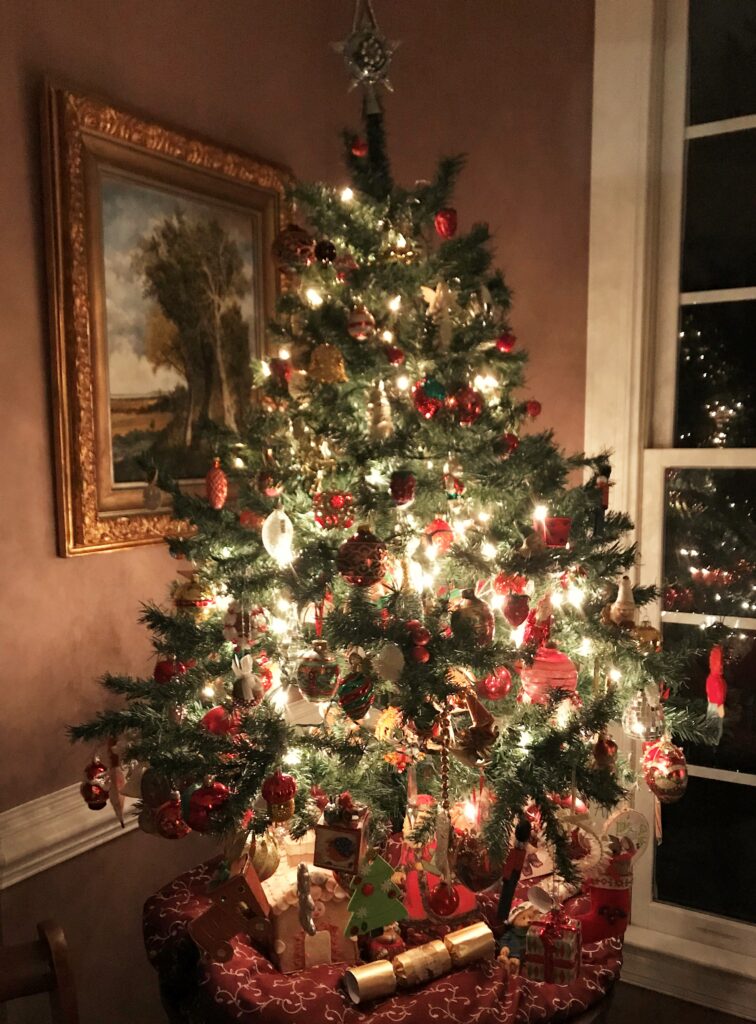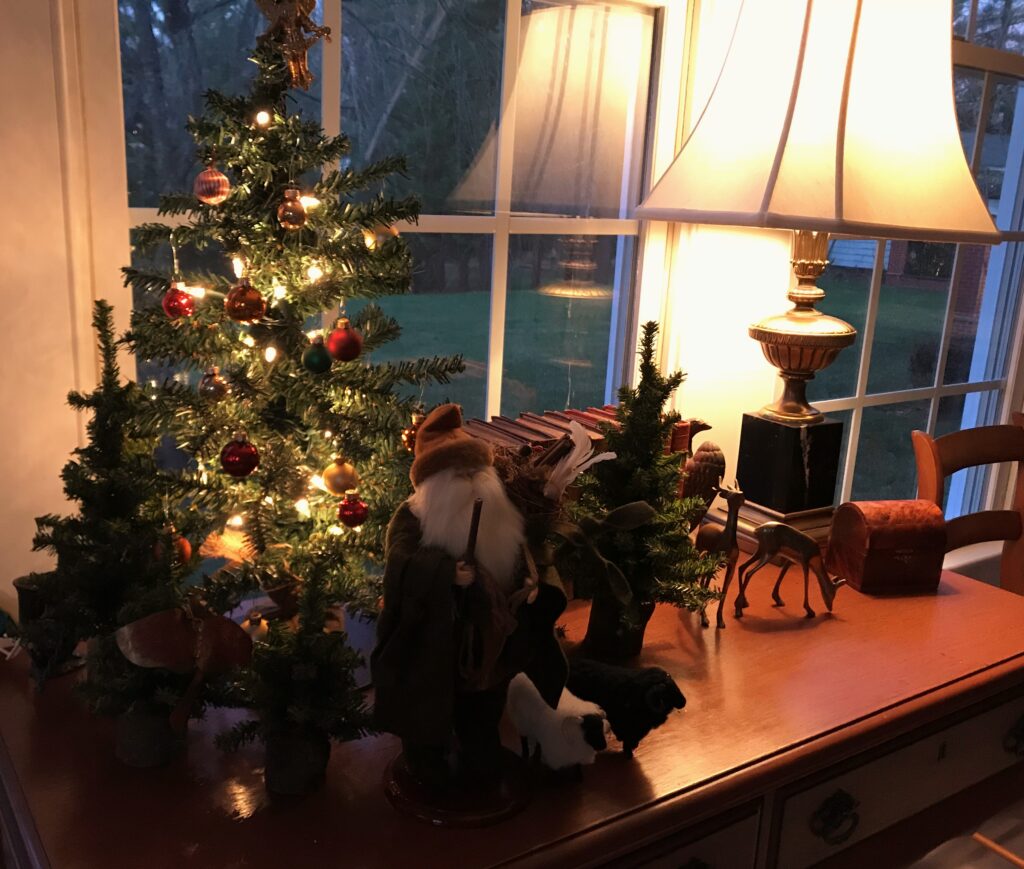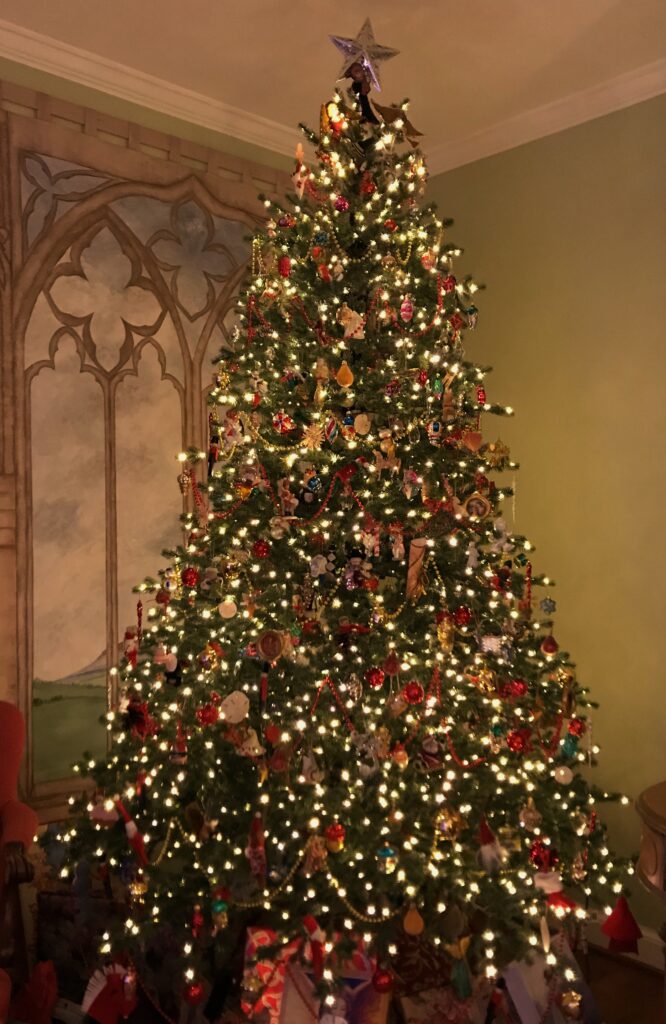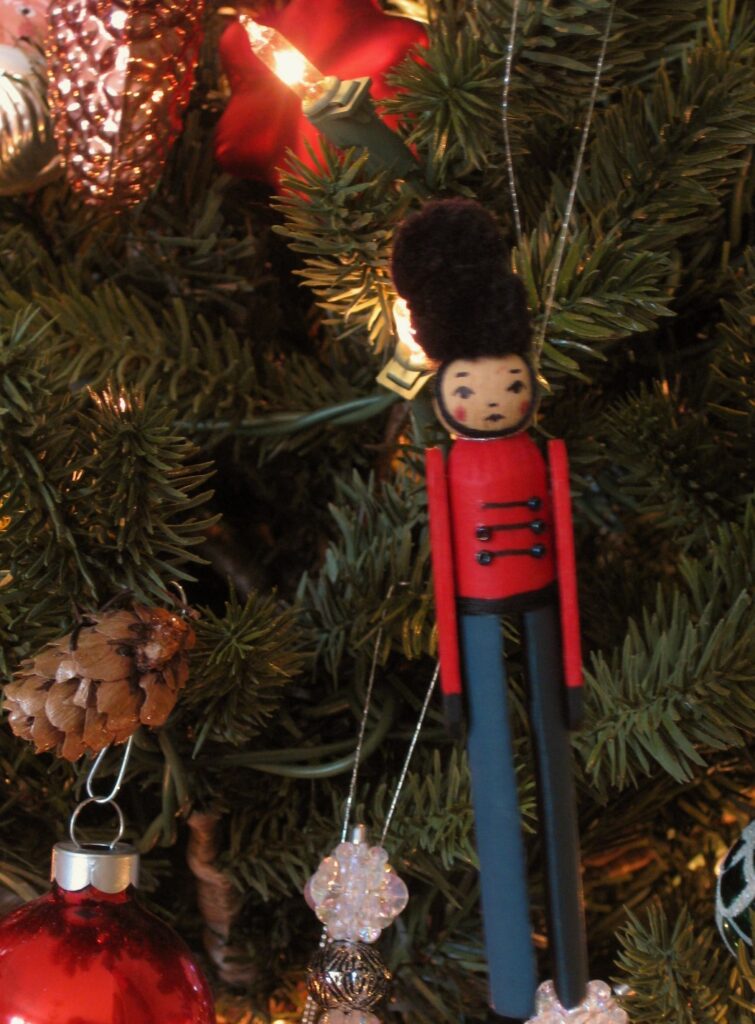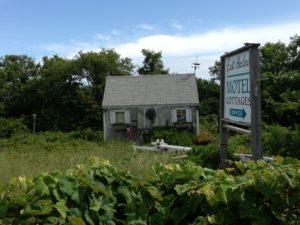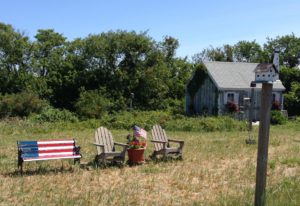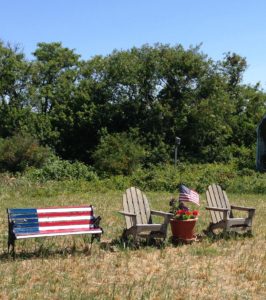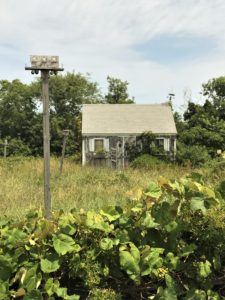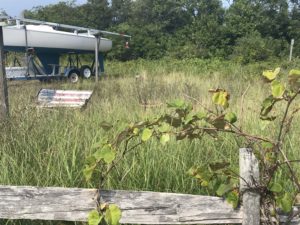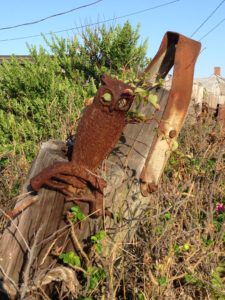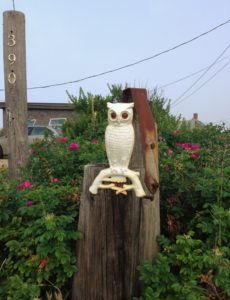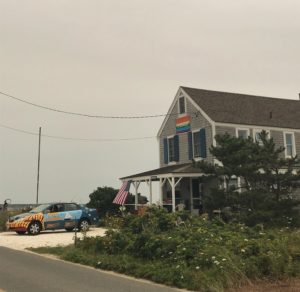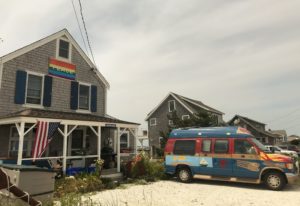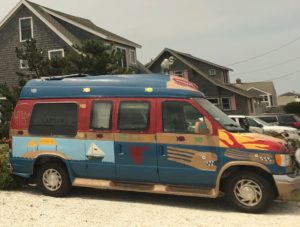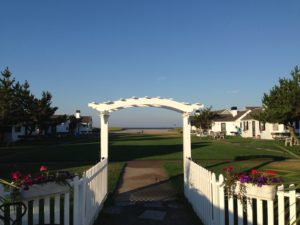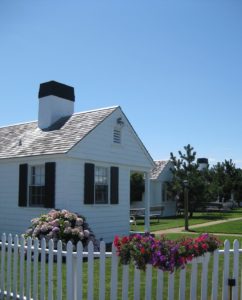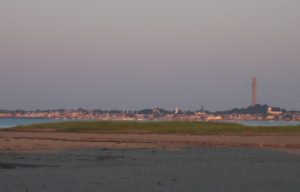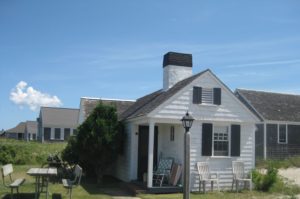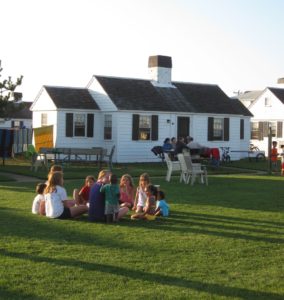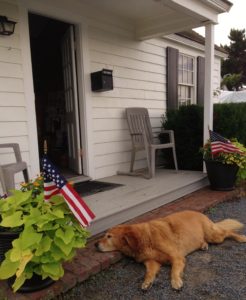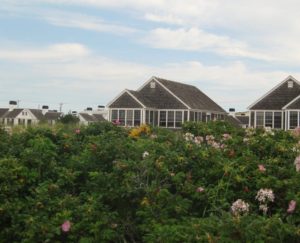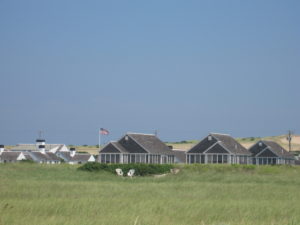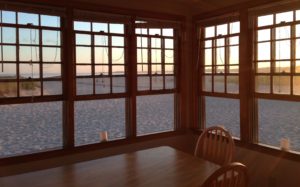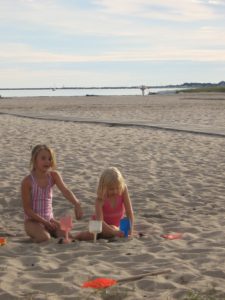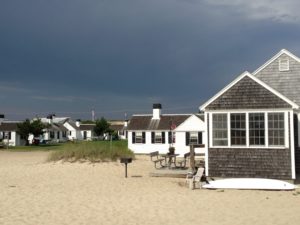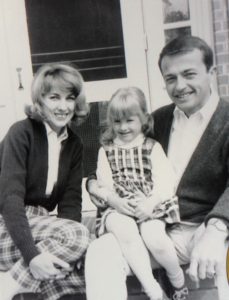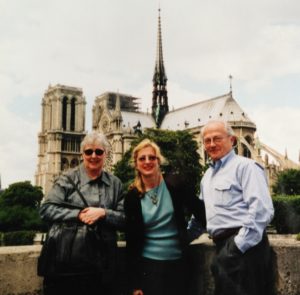Hats off to all the men who make the little people in their lives feel welcome, loved and safe, the way I felt in my dear daddy’s arms. Cheers to the good guys who have the strength and courage to be kind, nurturing, supportive, and occasionally vulnerable. May the blessings you provide be returned to you with interest. Happy Father’s Day, fathers and fatherly men!
Category Archives: Parenthood
Oh, Christmas trees, 2020
This year’s peculiar pandemic Christmas season has been lacking (and lackluster) in too many ways. But it also brought about a return to some activities that I thought might have been largely confined to the past. In an earlier post, I wrote about how my daughter and I, home bound together in the family pod, were inspired to make a new type of Christmas ornament for the first time in years. It wouldn’t be right to consign our Band of Bulbs to a table or shelf. They needed an appropriate home for the holiday, as did our creations from years gone by. They needed a Christmas tree. No. Not just one. If all were to be accommodated, several trees were required. My daughter was adamant about this.
Last year I didn’t find the time or energy to put up the tabletop tree in our playroom. I’ve been known to grumble that this slightly bedraggled tree’s ideal location is a crowded corner of our messy basement. But this tree is particularly dear to my daughter’s heart. It’s the locus for most of the ornaments of her childhood, many of which we made together, such as bread-dough clay snowflakes, stars and candy canes, awkward wrapping paper angels, and little drums of felt and spools. It’s the place for decorations that she bought, with her own money, each December at her elementary school’s holiday book fair. Its base provides the perfect spot for a gathering of stuffed animals consigned to the attic for the rest of the year. It sets the room warmly aglow with its multicolored lights. Once fully decorated, I have to admit that it’s a wonderfully cheery sight. And when positioned in a corner just so, its pronounced slant is barely noticeable.
We hadn’t put up a tree in my mother’s house next door since her relocation to Virginia three years ago. Again, with time on her hands and a general absence of social activities, my daughter took the lead. Nana’s house, she insisted, must have a tree. Wasn’t there one lying forlorn, in pieces, in the basement? It’s been eleven years, when we spent Christmas in Atlanta, since she’d seen the ornaments my parents and I had collected and crafted over the years, the ones I remember so well from my childhood. Even the hand-written, idiosyncratic labels on the boxes bring me smiles and vivid recollections: Handmade Fancy Balls. Santa Makings. Big Red Balls. Angels & Rudolfs. So it was a special pleasure to unpack these vintage treasures again with my daughter, as Mama and I recounted the stories of Christmases past that they prompted.
Even some of the smallest of trees were decked out in lights and baubles this year at my mother’s.
Back at our house, the three skinny alpine trees in the dining room serve as the setting for most of our cork and pinecone people, pasta angels, Cape Cod scallop shell angels, and now our Bulb Buddies.
The big tree in our living room was the last to go up. We decorated it over a period of nearly a week. No ornament, even those that were damaged or funny-looking, was left out this season. Each one found a place on the tree. I bought no new decorations at all this year. None, indeed, were needed.
The boxes of holiday trappings stored at my mother’s house and mine would likely be considered mere clutter by many. But to me, to my daughter, my mother, and to some degree, even to my husband, these battered containers are filled not with stuff, but with happy memories. They spark joy. And joy has been elusive and fleeting throughout 2020. Let’s seize it, and savor it, where, when, and while we’re able.
I wrote about some of the best-loved ornaments on the family Christmas tree of my childhood in several posts from 2015. See:
Childhood Treasures on the Christmas Tree
Back to School, at Home
School began again here in Northern Virginia this week. It’s the strangest “Back to School” ever, with all classes taught remotely. Last year I wrote about the poignancy of those “First Day” pictures that flood social media sites every fall. (See here.) The current photos have a different sort of heart-wrenching quality about them. Gone are the signs of jittery anxiety about bus-riding, lunch in the cafeteria, fitting in socially, and spending hours away from home. Largely vanished, too, is that hopeful excitement that comes with a new adventure and the opportunity for a fresh start. This school year drags with it a melancholy unease, heavy with the loss of what should have been. There will be no fun school-sponsored group events, no band, orchestra or choral concerts, no in-person drama productions, at least for months, and no fall sports. But without a doubt, there will be the ongoing annoyances of Internet and WiFi outages, tech complications, and occasional widespread system failures. Frequent parental intervention will be required, a serious problem for working moms and dads. There is the issue of space, especially in smaller households, the difficulty arising from an entire family working and schooling at home. And then, when things are progressing as intended, there is the dull sameness of hours sitting in front of a screen staring at a Zoom gallery.
For college kids, the situation isn’t much different. Our daughter’s spring break last March slid into online classes at home. After a summer that involved unprecedented amounts of time with her family and too little with friends, she began her fourth year again at home. The University of Virginia encouraged students not to return to grounds until after Labor Day. Now she’s once again in Charlottesville, in the apartment she shares with three friends. It’s not the final college year they had anticipated, that’s for sure.
This new school year feels anything but new. It’s already tired, burdened by the same frustrations we experienced in spring and summer. Is it really September? Does it matter? The months have ticked by with alarming speed, yet each day is much like any other.
In the alternative reality of our Covid world, time has become slippery, looping and uncertain. I’m reminded of the red plastic cassette recorder I enjoyed as kid. My closest friends and I used it to tape variety shows modeled on The Carol Burnette Show and soap opera parodies (Another World in Hay City). Our talent for comedy, if little appreciated by a wider audience, kept us in stitches. I can see my finger on the rewind button, hear the whir of fast forward, the loud sudden clunk of the stop. I recall the baffling emptiness when an expected song or bit of dialogue had somehow disappeared. Sometimes we hit the wrong button and accidentally recorded over a prized skit or hilarious duet. Since March, 2020 has moved with a similarly lurching, erratic randomness. Some aspects of life that we cherish most have simply been erased. Many people are grieving lost loved ones. As I write, nearly 192,000 Americans have died from the novel coronavirus. Sometimes it feels as though a cloud of semi-mourning shadows the entire country. We plod along, uncertainly. And we keep ending up where we started, in a place we never wanted to be.
Happy “Back to School”? Not particularly. Not this year.
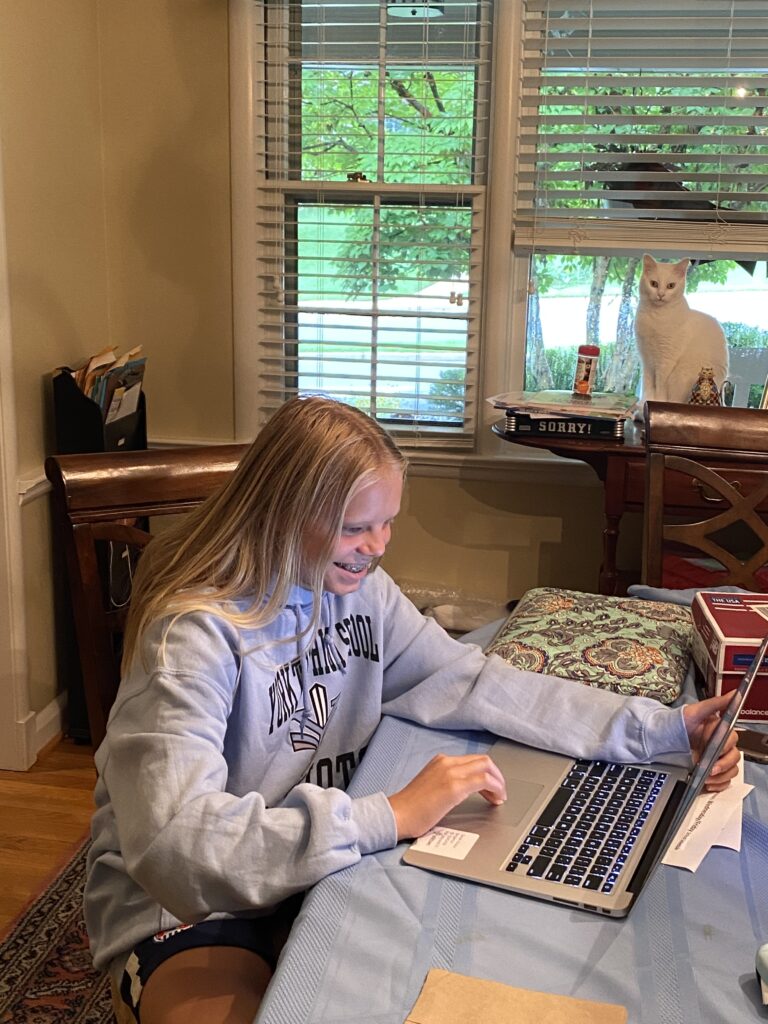
Maple Tree Shadows on the Moonlit lawn
Mid-afternoon on Tuesday, big blobs of snow suddenly began falling. Trees and grassy areas were quickly coated. An hour later, our nandinas were bent double, weighed down dramatically by the heavy accumulation. By early evening, the sky was clearing and the half-moon was bright. The shadows of the silver maples were sharply defined on our front lawn. This glowing, moonlit landscape, as I’ve written before, is perhaps my favorite view, ever and anywhere. (See here, in a post from 2014.) It’s certainly one of the aspects I love best about living in our house.
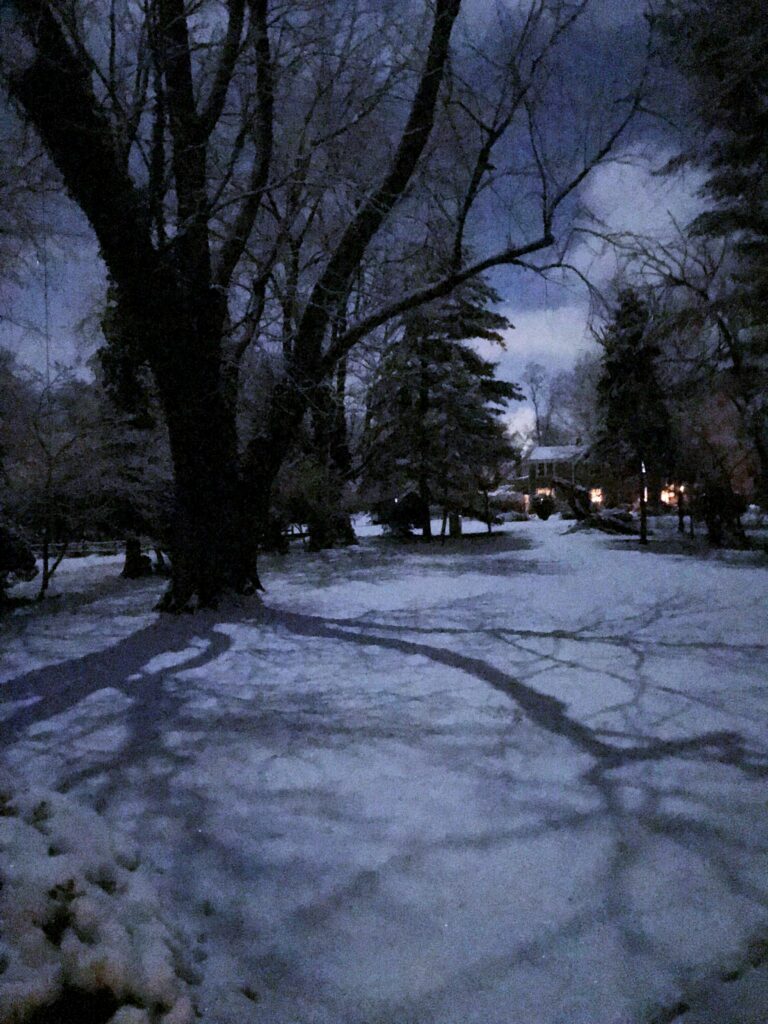
The vision always carries me back to the first winter we spent in our house. Our now twenty-one year-old daughter was just a year old. I spent many hours each night sitting in a rocking chair, holding my baby and looking out at the snow. The winter of 2000 was an especially snowy one, and our daughter resisted sleep with steely resolve. She required lots of rocking, lots of snuggling, lots of nursing. The first time I looked up from the face of my (at long last) sleeping baby and saw the dark blue shadows of the trees etched so distinctly on the lawn, I gasped. I expect such an image in a snow scene painted by Maxfield Parrish, but I didn’t think I’d see it in my front yard.
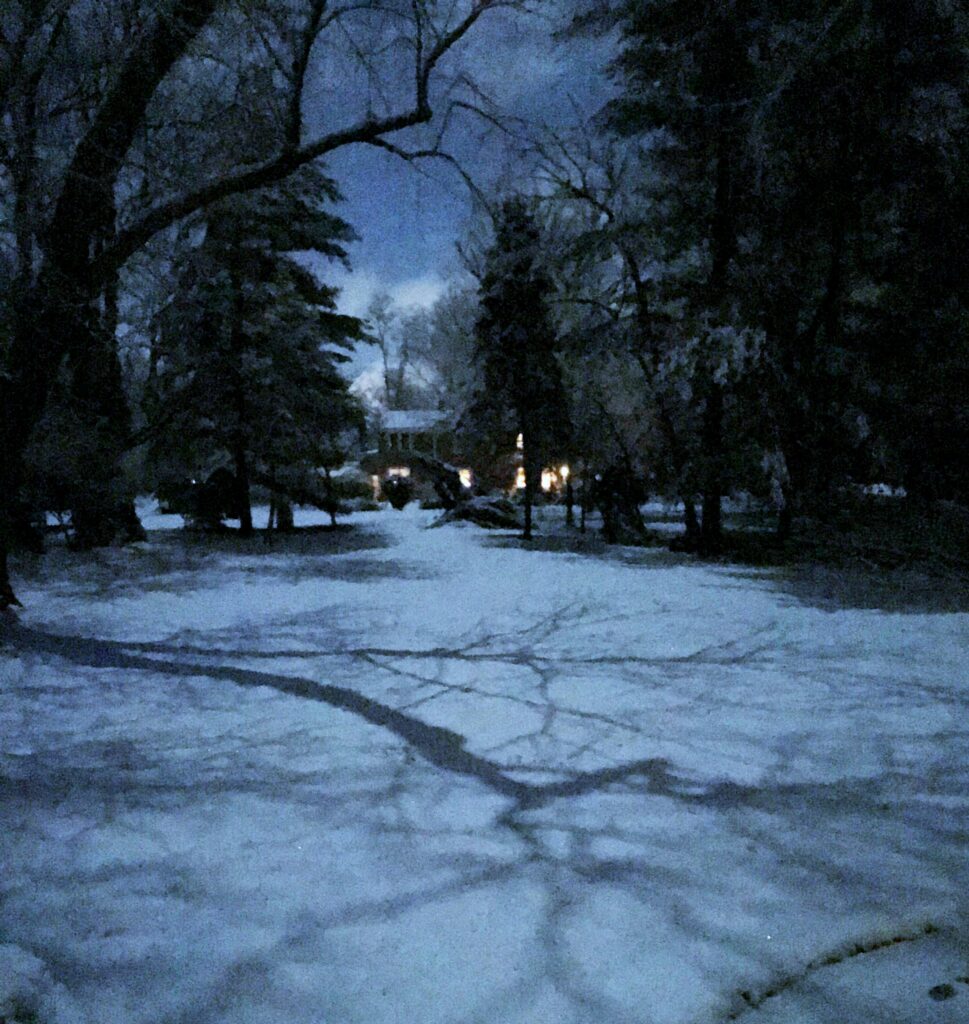
I’d assumed the vision couldn’t be captured in a photograph. But Tuesday night I thought it was worth a try.

These pictures don’t fully catch the magical effect I witnessed firsthand, but they give some idea.
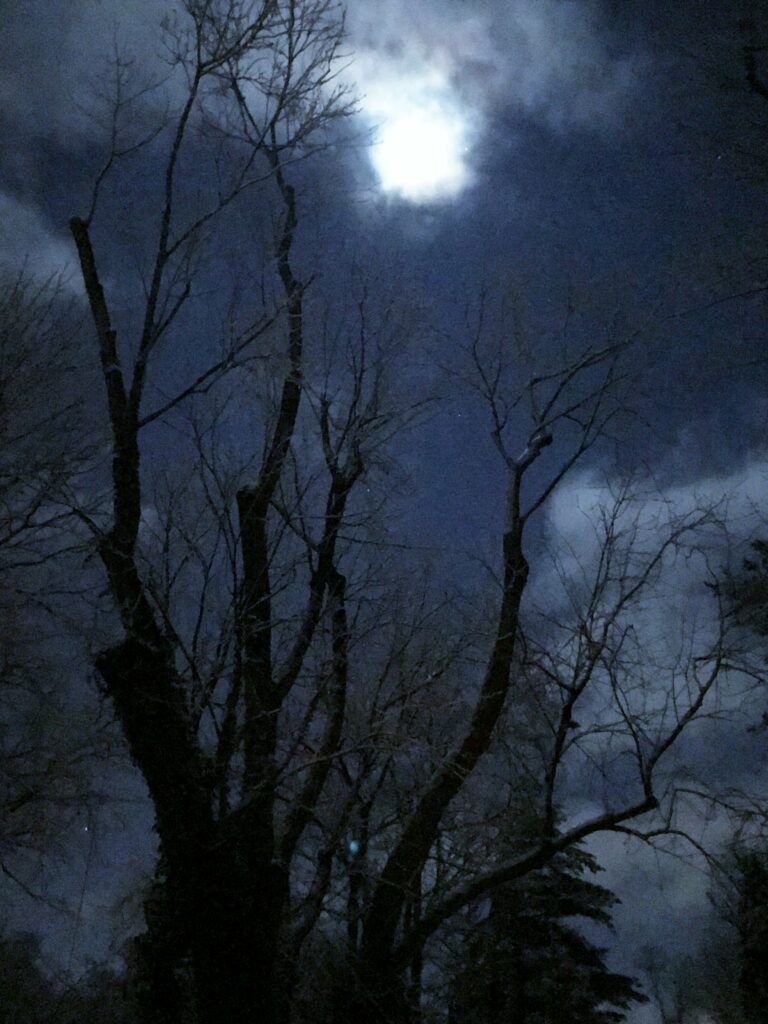
As my daughter and I worked to chip away at the thick ice on our back walkway yesterday afternoon, I was briefly disheartened to think of the long stretch of winter yet to come. Then I remembered the spectacle of moonlight shadows on the lawn. The February Snow Moon will be here soon. May it live up to its name.
School Bus Sounds Summon a Long-Ago First Day
As of last week, school is in session here in Northern Virginia. With my only child starting her third year in college, I’m no longer directly involved in the much-ado about back-to-school.
But until I’m deaf, I’ll be well aware of the start of the new school year. Once again, on weekday mornings beginning around 6:30 AM, the school buses make their loud, laborious way down the side street below our bedroom windows. There are so many buses. They swoosh, they roar, they sigh, they creak. They emit piercing back-up beeping sounds for extended periods. We discovered, when we moved here nearly twenty years ago, that we had settled in a pivotal juncture in Fairfax County, a dividing line between two school districts. If we moved across the street, our daughter would have to change schools. There are buses for elementary, middle and high school students for both districts, as well as those for several magnet schools. There used to be a special Kindergarten bus in the afternoon, before the all-day program arrived. Some buses are picking up or dropping off; others turn around, having reached the end of their routes.
The clamor and commotion of the school buses every fall brings back the conflicting and powerful emotions I felt on our daughter’s first-ever school day. The day she started Kindergarten, when we sent her off, parentless, on one of those enormous, monstrous, heaving, yellow-orange vehicles.
Our five-year old put on a brave face that memorable day. My husband and I watched and waved, smiling with forced cheer, trying not to grimace, until we could no longer see her dear little blonde head peering from the window. Then we turned away, avoiding other parents, fighting back tears. H quickly jumped in his car and followed the bus to school. At a distance, he waited until she was safely inside the building. All that morning I wondered: What is she doing now? And now? Is her class lining up to come home yet? Just a few hours later, around 12:30, the Kindergarten bus dropped her off at the end of our driveway. When our girl emerged happy, I breathed a huge sigh of relief. The after-school photo I took of her, sitting in our doorway, shows her confidence, her triumph.
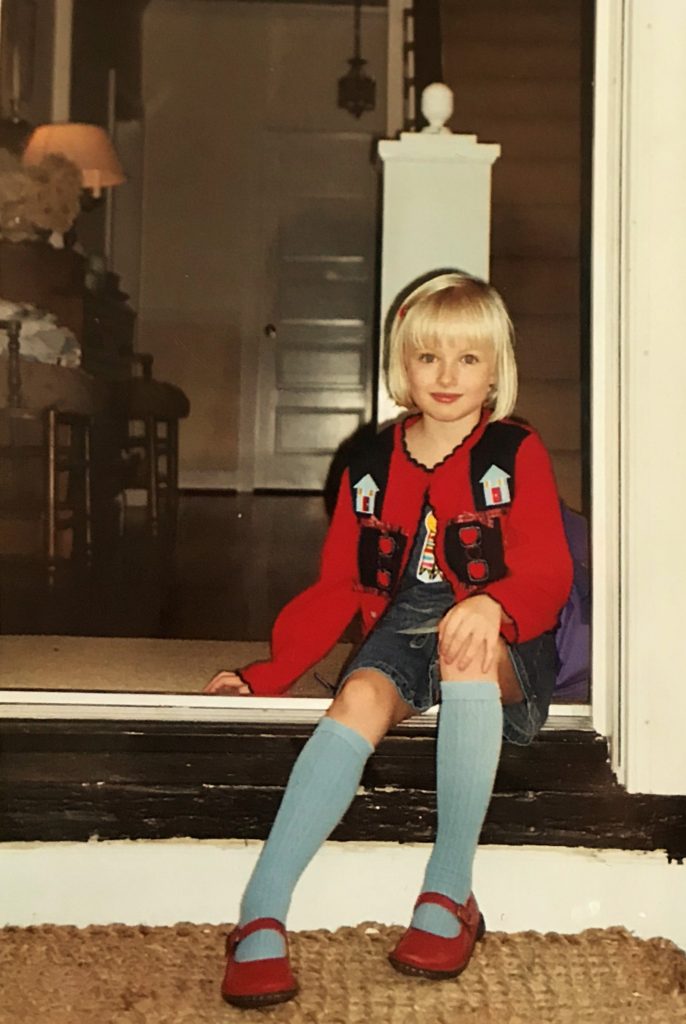
Last week I looked back at that photo and compared it with the first-day images preceding it in the morning. They told a different story. The group photos struck me as especially poignant. My daughter, like the other younger children, tries to express a sense of ease, but her anxiety and trepidation show through. The bulky backpacks contribute to the littlest ones’ slightly awkward postures. No one’s clothes seem quite right. Wasn’t our daughter hot in that fall sweater? All the other kids wear tee shirts. And within the group, each child is a little island unto itself. Even the older ones who appear more self-assured, even they look isolated and alone. At least they do to me. Maybe, in a fit of nostalgia, I’m reading too much into these snapshots from fifteen years ago. But I don’t think so.
During the morning dog walk with the pack, I heard the first-day stories from friends who still have kids in school. Later, I saw the photos on Facebook. There are the little ones summoning their courage as they hold up hand-lettered “first day of” signs. There are the older ones glaring sullenly, attempting to shoot poison dart rays at a parent who insists they pose uncomfortably in the gray light of dawn.
Several of my friends are dreading the college send-off that looms in the future. I understand, and I remember. But I will tell them this: it will probably be less painful than that off-to-Kindergarten day.
And it will be here before you know it.
That Satisfying Sameness on Shore Road
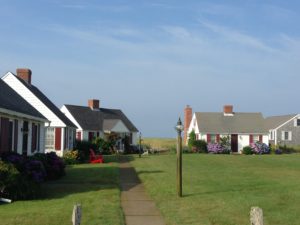 Shore Road, Route 6A, is our Main Street while we’re in Cape Cod, and I walk it nearly every morning. As in our little cottage complex, major changes along the road are refreshingly few and far between. Its scenery is almost as familiar to me as my childhood back yard. My Shore Road walks serve to further sustain the illusion of timelessness in Truro.
Shore Road, Route 6A, is our Main Street while we’re in Cape Cod, and I walk it nearly every morning. As in our little cottage complex, major changes along the road are refreshingly few and far between. Its scenery is almost as familiar to me as my childhood back yard. My Shore Road walks serve to further sustain the illusion of timelessness in Truro.
 Fence-hugging hydrangeas, for example, which thrive in the moist salty air, are always bountiful and glorious.
Fence-hugging hydrangeas, for example, which thrive in the moist salty air, are always bountiful and glorious.
Typically, any changes along this thin ribbon of land by the bay are so subtle that they serve to reinforce the unchanging nature of the place. Most of the homes and cottage groupings appear largely the same, year after year after year. Routine maintenance, not extreme renovation, is the guiding principle. The small structures of this condominium complex, above, continue to be nestled snugly amid the roses, much as they have been for nearly two decades. Hours of diligent pruning, no doubt, keep the surrounding plantings looking luxuriantly abundant but not overpowering.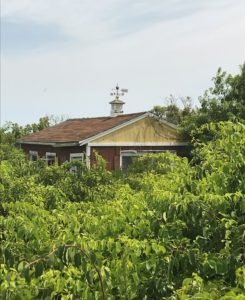
Nature can easily get the upper hand, if left unchecked, as it has above. Each year, untamed, weedy foliage encroaches a bit more around this small, sagging, cupola-topped cabin. Considering the high value of real estate along the bay, there are a surprising number of small Shore Road structures, some barely bigger than sheds, that exist in a state of ongoing gradual decay. They appear to lack all creature comforts, but some show signs of sporadic human occupation. This gives them an air of mystery that adds to their appeal.
There are certain areas where the tug-of-war between nature and the attempt to subjugate it is particularly evident. For as long as I’ve walked Shore Road, the large lot above has been occupied by a small semi-dilapidated cottage, whimsical bird houses on tall posts, and the occasional boat. Some years, the foliage reigns victorious, as in the top photo, dating from 2013, where the cottage appears to float in a sea of tall grass and grapevines. The following year, the weeds were mown and vines cut back substantially. Flower boxes adorned the cottage’s front windows. Near the road, a patriotic tableau had been assembled: a wooden bench painted like the flag, Adirondack chairs and a pot of geraniums
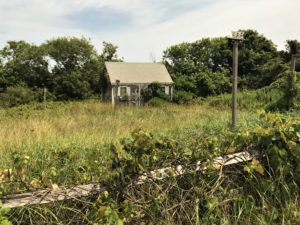
Since 2014, nature has been allowed its riotous advance. Once again, the cottage is enveloped by high grass and unruly foliage. The flag bench, its paint faded, appears to be sighing toward collapse, and the split-rail fence groans under a heavy tangle of grapevines. The chairs have disappeared, and even the bird houses are in advanced decline. The lighthouse is unrecognizable, and the caboose is little more than a façade. (See Shore Road Scenes in Cape Cod, August 24, 2012.) Next year, will the progression toward wildness and ruin continue? Or will there be another effort toward taming nature and renovating the manmade? I hope it’s one or the other, and not a dreaded third option: a gleaming new structure that stands out starkly from the pleasantly worn and familiar Shore Road sights I cherish.
I’m not averse to some instances of refurbishment. Two years ago, for example, this rusty roadside owl received a coat of white paint and amber-colored eyes. Such measured, unobtrusive alteration I can wholeheartedly support. I appreciate it all the more knowing that it’s likely to be overlooked. I enjoy thinking I know Shore Road the way I know an old companion.
I can also welcome a unique addition that fits in well with that which already exists. The gray shingled house above, with its American flag and rainbow banner bearing the word PEACE, looks essentially the same every year. Several years ago I noticed an interesting vehicle parked in front, a small car colorfully painted with a variety of sea creatures in a folk art style. This year the little car gained a sibling, a minivan painted with similar colors and designs: sharks, lobsters, fish and sailing scenes. A white plastic egret keeps watch from the roof. The light-hearted, slightly eccentric spirit of these vehicles is in perfect sync with the PEACE house and with the Outer Cape. (They remind me of the Key West Don’t Dredge on Me truck encrusted with sea creatures. See Uniquely Key West, April 24, 2015.)
It’s been five years since I last wrote about the Shore Road sights I hold dear. As I began looking back and comparing this summer’s photos to those from earlier years, I was afraid that the idea of sameness might prove to be primarily in my mind. Maybe my old friend has changed more than I’d like to admit?
Generally, I don’t think so. This narrow strip of land still seems to be largely immune to the accelerated pace of change that characterizes my former Atlanta neighborhood or the DC suburbs where I now live. Every return visit brings this reassurance: the familiar sights of Shore Road, and its inimitable essence, they endure. Perhaps I hope that through proximity, this immutability is contagious. By spending time each summer in a timeless place, can I slow my own aging process? Or at least feed the fantasy? These days, it couldn’t hurt.
******************************************************************
For more on this topic, see Back Again, on Shore Road in Truro, September 13, 2013.
In Cape Cod, the Illusion of Timelessness
At the end of July, our family made our annual drive from northern Virginia up the east coast, almost to the very tip of Cape Cod. Our happy summer place is an unassuming cottage complex in North Truro. It looks out on the curve of the bay toward the Pilgrim Monument in Provincetown. For two weeks every summer, a little gray shingled rental cottage is our home. Why return to the same place year after year? Once I didn’t understand. When I was growing up, my family considered real vacations as rare indulgences. With the exception of a few special trips when I was older, we made do with a few days accompanying my father to a public health convention in Jekyll Island, or a visit to help out extended family in Kentucky. Had H’s family been in thrall to the same sort of thrifty practicality, they never would have packed up their young kids in a cramped VW camper and driven from Rochester to the Outer Cape in the summer of 1974. They certainly wouldn’t have returned every year since. And that would have been a shame.
Cape Cod seems an odd fit for a couple that doesn’t swim, sail, or even eat seafood. But the unique beauty of the place casts its spell. It gets under your skin and beckons you back. My husband and I began joining his family there with our daughter when she wasn’t quite three. Seventeen years later, it’s hard to imagine a summer that doesn’t include our little piece of the Cape.
View from our picnic table: across the sand and the bay, the Provincetown skyline.
During my husband’s family’s first visit to the Cape, they crowded into a one-room efficiency in a Truro motel, all five of them. (The next year there would be six, after H’s sister was born.) Quarters were tight, to say the least. The proprietor could have been friendlier, but they chose to overlook his surliness. When, while checking on a malfunctioning stove burner, he spoke with biting harshness to H, a meek seven year-old at the time, that was simply too much. The Cape was wonderful, and they would return, but they would find another place to stay.
On their last day, they took a closer look at a nearby establishment set back from the bay on a particularly wide stretch of beach. It featured white dollhouse-like cottages grouped around two neatly manicured greens. Each house had its own picnic table outside. The interiors were basic, no frills. Each had two bedrooms, a living room with a fireplace, kitchen and bathroom. Some had covered front porches. There was a big, new, sparkling pool. Kids were playing on the greens and digging in the sand. Families were cooking burgers and hot dogs on the little grills in front of their cottages. It was a relaxed, friendly place. H’s family determined to try to stay there the next year.
Luckily, they succeeded. H’s parents return to the very same white cottage still. We have a cottage for the three of us, and H’s sister is there with her husband and two boys in their own place. The wide, uncrowded beach has become even wider and therefore even less crowded. All the sand eroding from everywhere else along the bay seems to be deposited there. Otherwise, the appearance of the family-owned complex, in the same hands since 1967, has changed little since then, or even since the 40s, when most of the white cottages were built. The atmosphere is still that of a big-hearted summer village. The well-maintained greens are still perfect for ball games and water fights. Several somewhat larger cottages, with more expansive views and open floor plans, were constructed in the 80s. These are covered in weathered cedar shakes. Accommodations throughout are still basic. While microwaves and WIFI were added in recent years, there is no AC. This is not the destination for those who require high-end resort living in a space worthy of Architectural Digest. Head to the Outer Banks or the Charleston area for that. But for those who yearn for reassurance that the Old Cape Cod of the Patti Page song still flourishes, this is the place.
Ripley the Golden Retriever rests in his customary spot outside the office door. He may appear to sleep, but his tail starts wagging when he senses the approach of a friend. As long as I can remember, there has been a resident retriever keeping watch by those steps. Before Ripley, it was Logan.
The “new” cottages, seen from the bay side.
The view from our kitchen, as sunset approaches and the shadows on the sand turn blue.
The summer village we return to every year is humble, but it offers a priceless luxury in this world of ever-accelerating change: the illusion of timelessness. As I’ve written before, the pace of change is exceedingly slow along this part of the Cape. (See Back Again, on Shore Road in Truro, Sept. 13, 2013.) While the light and the sands are constantly shifting, the narrow strip of land, its scrubby vegetation and unimposing, weathered buildings, like those in our cottage complex, appear much the same, year after year. Here, it’s easy to pretend, for a week or two at least, that time stands still.
A temporary time-out.
Time out of time.
Or the illusion of it.
It’s almost worth the drive.
Changes
Back in June, when I last wrote a post for Wild Trumpet Vine, I anticipated a summer full of major changes. Those expectations were fulfilled.
A bare-bones summary of key events in the life of my family since then:
Our daughter graduated from high school. We shopped for college gear. We enjoyed our annual Cape Cod vacation. The sale of my childhood home in Atlanta was completed. We moved our daughter into her first-year residence hall at the University of Virginia. (She had made her college decision, at long last, at the end of April.) I flew to Atlanta to deal with the final culling and packing of forty-nine years worth of accumulation, and to prepare the house for the new owners. A dear friend drove my mother to Virginia to spare her from witnessing those last frenetic stages of the move. At the end of that week, I walked through bare, empty rooms, turned the keys over to a new family, and flew back to Virginia. 
Three days later, the huge Atlas moving van arrived at my mother’s new house, conveniently located next door to ours. Unpacking has been a slow process, hampered and overshadowed by the cloud of my mother’s ongoing back pain and the rounds of doctor visits it requires. She’d been in worsening pain in the weeks leading up to her departure from Atlanta. Now we know the cause, but treatment is challenging. Mama, who has been for most of her life a whirling dervish of industrious creativity, is now largely confined to sofa-sitting.
If this account sounds dry and devoid of emotion, it’s because I’ve had little time for reflection. I’ve been packing my thoughts away, much as I packed up the Atlanta house. Like the boxes still stored in my mother’s basement and garage, I’ll get to them one day before long and sort them out. Until then, I’ll ease back into Wild Trumpet Vine. I’m not yet up to the task of writing about the big things, so I’ll focus on little ones. I foresee quietly scintillating commentaries on the colors of the season, the many charms of my silent, sleeping dog, that sort of thing. Whether they’re read by others or not, I will write for my own mental health. I hope a few of you will stick with me as WTV awakens from dormancy.
Final Last Day of School
This year, my daughter’s last day of school took me somewhat by surprise. She’s been finished with all work and even finals for a while now. On days of exams from which she was exempt, she didn’t need to show up on school grounds. Or did she? Would her absence be excused? Did I need to call the school or send a note, and what should I say? Would she be penalized if I told the truth? Would that even matter? We’ve debated these questions for four years, and the answers remain up in the air. My daughter has grown from young teen to young adult in this span, but some things we never managed to learn. Only this much was certain: if she showed up to class, there would be no assignments to complete. She had finished them all, and successfully, more than satisfactorily. But there would be parties and goodbye opportunities not to be missed.
Tradition is important to my daughter. On Monday she wore her “Lazt Day of School” earrings. She made these in sixth grade, and she has worn them every last day since. She used the alphabet beads she got for Christmas when she was three. No more s’s remained in the set; hence the z in “last.” Monday was apparently the official last day of classes for seniors. But many special activities continued this week: Convocation, Senior Picnic, Senior Breakfast, graduation rehearsal, the Senior trip to Kings’ Dominion. Today there is yet another graduation rehearsal.
The actual graduation ceremony is tomorrow. In the wake of so many to-dos surrounding the close of senior year, the reality of my daughter’s graduation has escaped me. I started to write “endless to-dos” above. But they’re not endless. In fact, they are ending. Really and truly. They end today. The thought lands with a thud. I haven’t had a chance to consider the true finality of it all. The finality that this “commencement” entails.
I’ve been a bit cavalier about these end times. Our daughter is rarely at home; she merely stops by briefly. When she leaves for college, it won’t be that different, will it? For now, I’m going to keep telling myself that’s the case.
I have the summer to come to terms with her departure. To face the new beginning that follows this ending.
On This Mother’s Day 2017
If Mother’s Day is here, then Father’s Day can’t be far behind. On both days, Daddy’s absence will be keenly felt, more so than usual. If you lost a parent in the last few years, you know the feeling.
I give thanks that I was born to my warm, loving, smart and funny mother, who is still very much with us. Before long, she will be closer still, when she relocates from Atlanta to Virginia. And I’m thankful that we had Daddy with us for so many years. I’m immensely grateful for the happy, comfortable life my parents worked so hard to build together, primarily for my benefit.
And on this first Mother’s Day without Daddy, I say a prayer for my mother, and for all the mothers, young and old, who are facing yet another day without their partner.
Chapel Hill, North Carolina, 1965
On the steps of my parents’ married housing apartment at UNC
Paris, 2002
For so long, it was the three of us. Now we’re two, but our hearts are fuller because we carry Daddy with us always.

